MAE 3303 Aerodynamics of Compressible Flow
Homework 6 Solution
Answers to Study Questions
- Why must expansions in supersonic flow take place over a finite
region in space?
ans: A discontinuous expansion would result in large gradients and thus an
increase in entropy. An isentropic change can only occur gradually.
- What is an expansion fan?
ans: An infinite collection of Mach waves that produce the expansion.
- What is a Mach wave?
ans: A infinitely weak discontinuity where the flow properties change
infinitesimally. The normal component of the upstream Mach number is 1.0.
- How can the Mach number downstream of an expansion be determined if
the upstream Mach number and the flow turning angle are known?
ans: The Prandtl-Meyer relation tells us that n(M2) = n(M1) + q.
Thus with M1 and q known, n2 = n(M2) can be calculated and
finally M2 deduced from a table or graph of the Prandtl-Meyer function.
- How are the pressure and temperature computed on the downstream side
of the expansion fan?
ans: Through use of the isentropic relations and knowledge of the Mach number
on either side of the expansion fan.
- Does the total pressure change across the expansion fan? Explain your
answer.
ans: No. The expansion is isentropic and thus the total pressure remains
constant across the fan.
- Explain how lift is generated in supersonic flow.
ans: Through the compression and expansion processes as the flow is turned
to go around the airfoil.
- Does the Kutta condition apply in a supersonic flow? Explain your
answer.
ans: No. The flow angles on the upper and lower airfoil surface near the
trailing edge need not be equal. Equalization will occur immediately
downstream of the trailing edge vi shock and expansion waves.
- Why do two-dimensional airfoils in supersonic flow produce drag?
ans: Due to the losses in total pressure as the flow crosses the shock waves.
- Define wave drag.
ans: Drag due to the production of shock waves in supersonic flow.
- Indicate whether each of the following quantities goes up, down, or
remains the same as the flow crosses an expansion fan.
Mach number, velocity, density, pressure, temperature, entropy,
stagnation temperature, stagnation pressure.
ans: Mach number goes up, velocity goes up, density goes down, pressure goes
down, temperature goes down, entropy stays the same, stagnation temperature
stays the same, stagnation pressure stays the same.
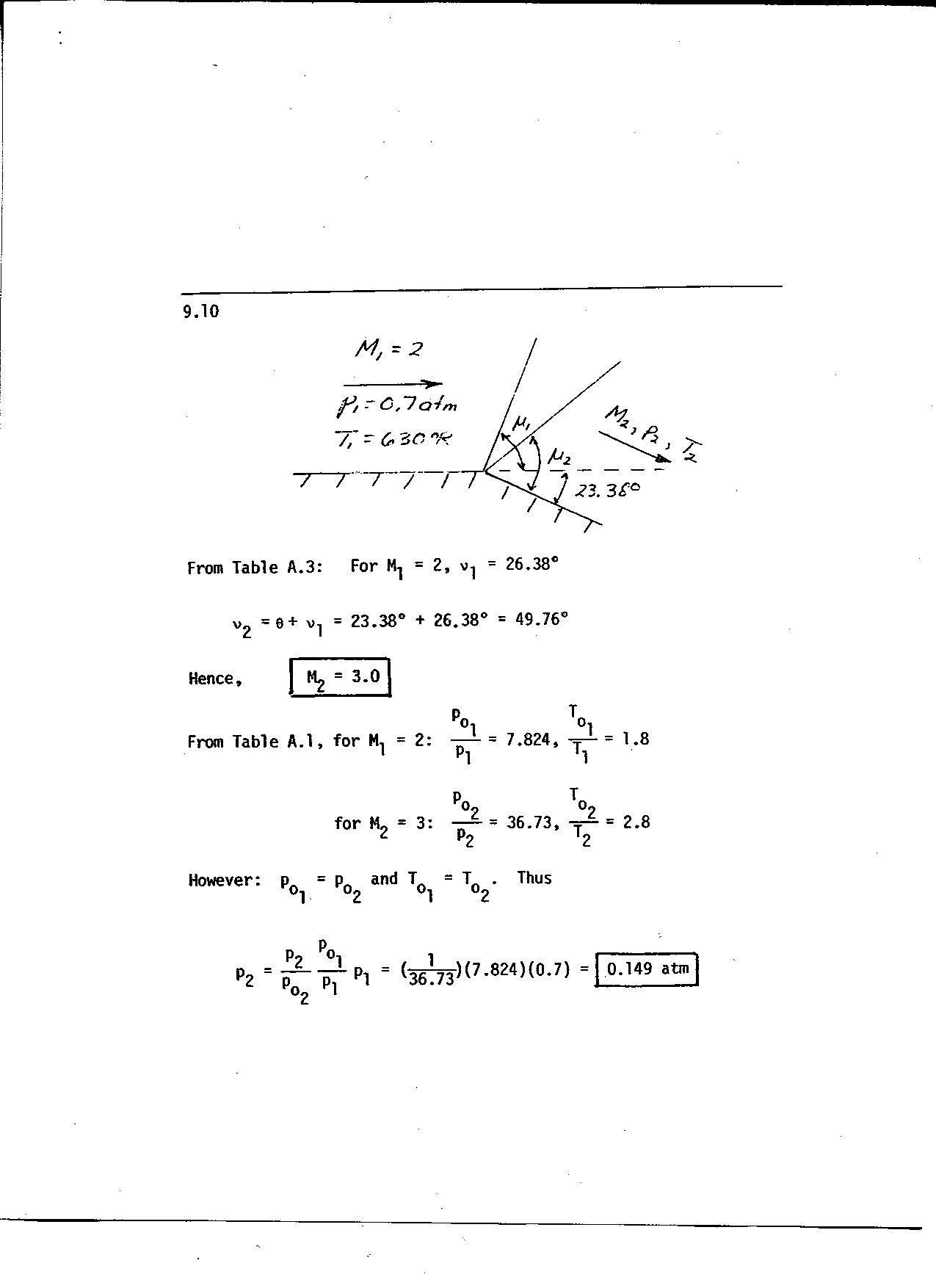
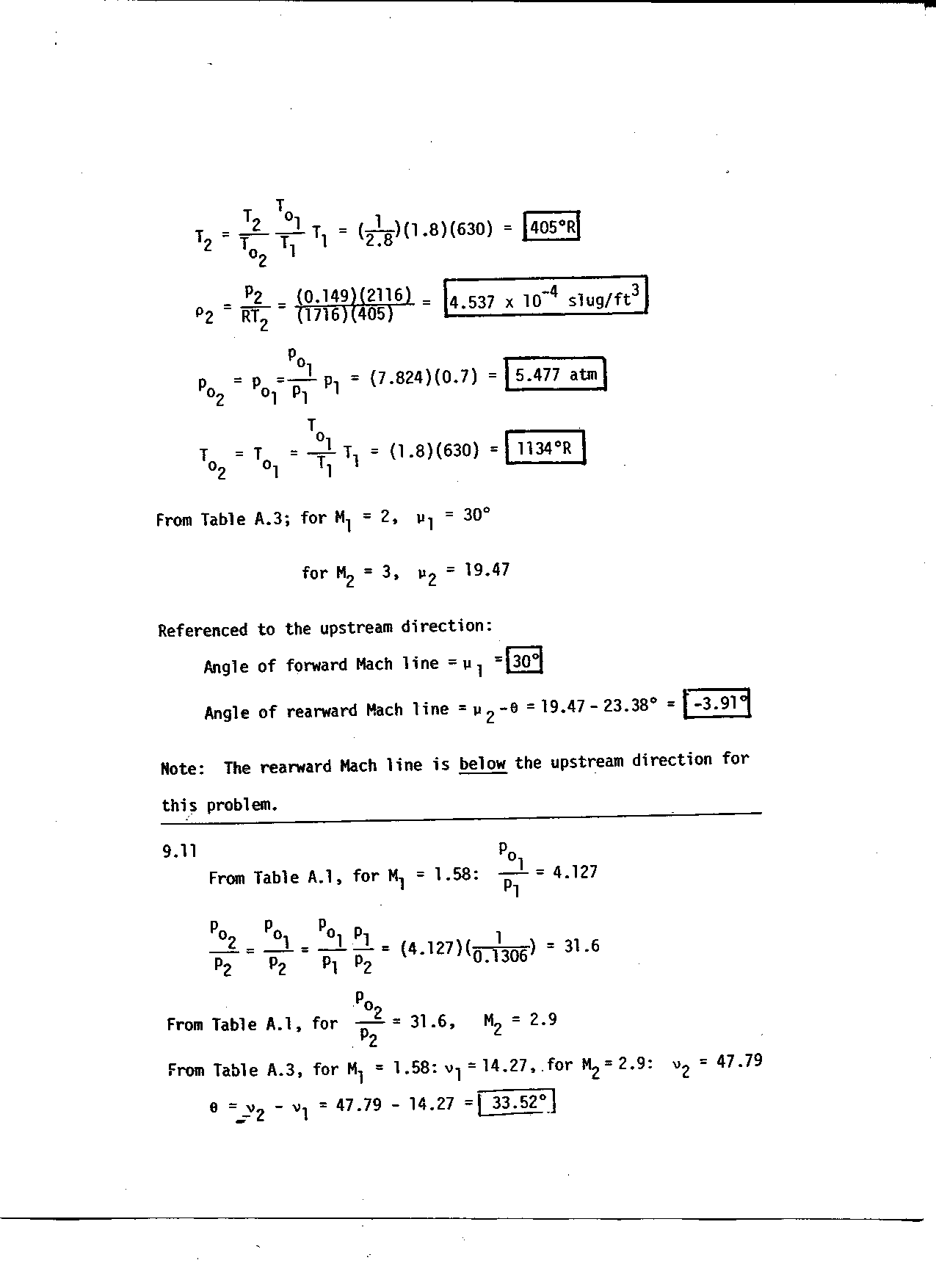

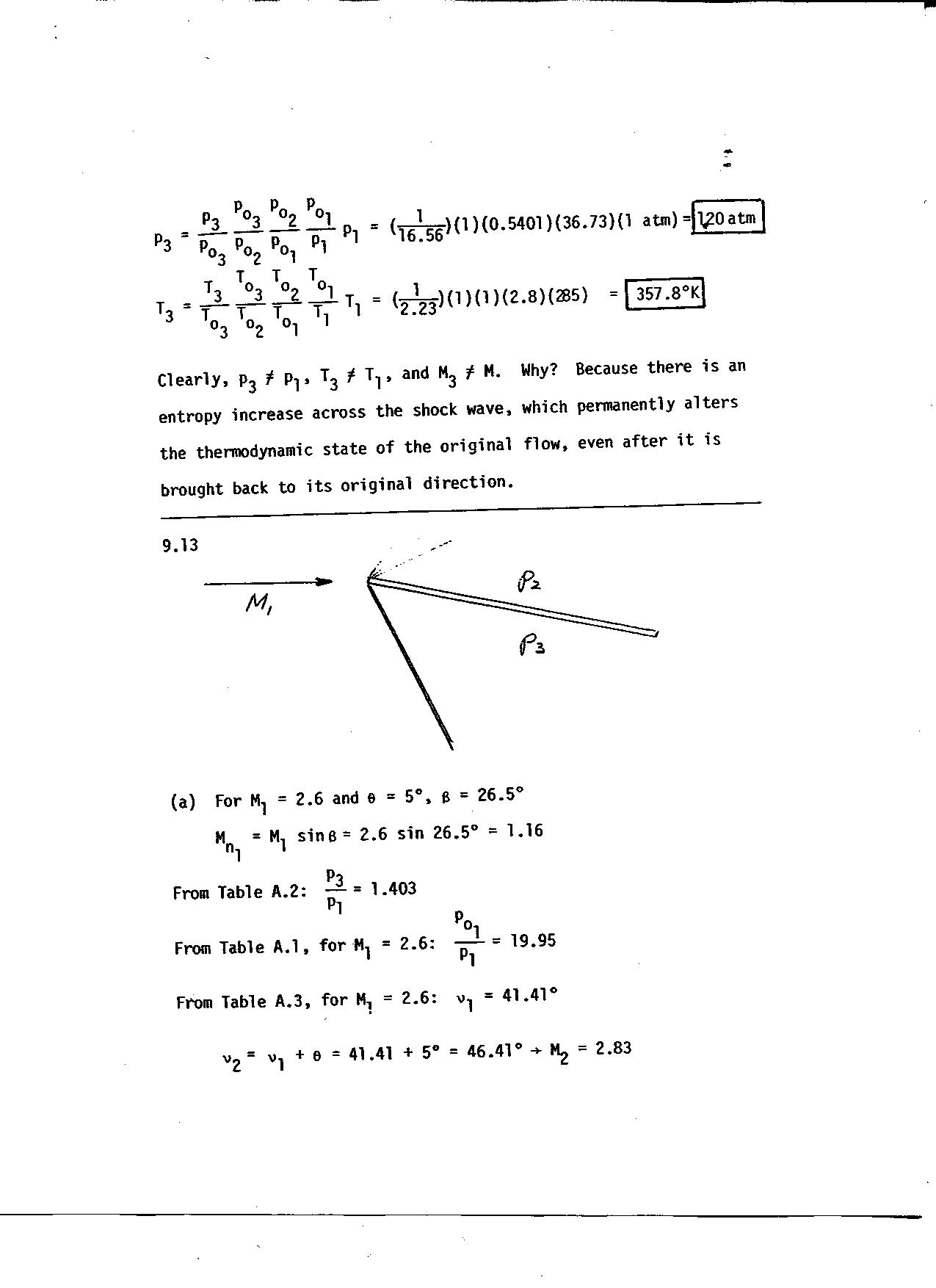
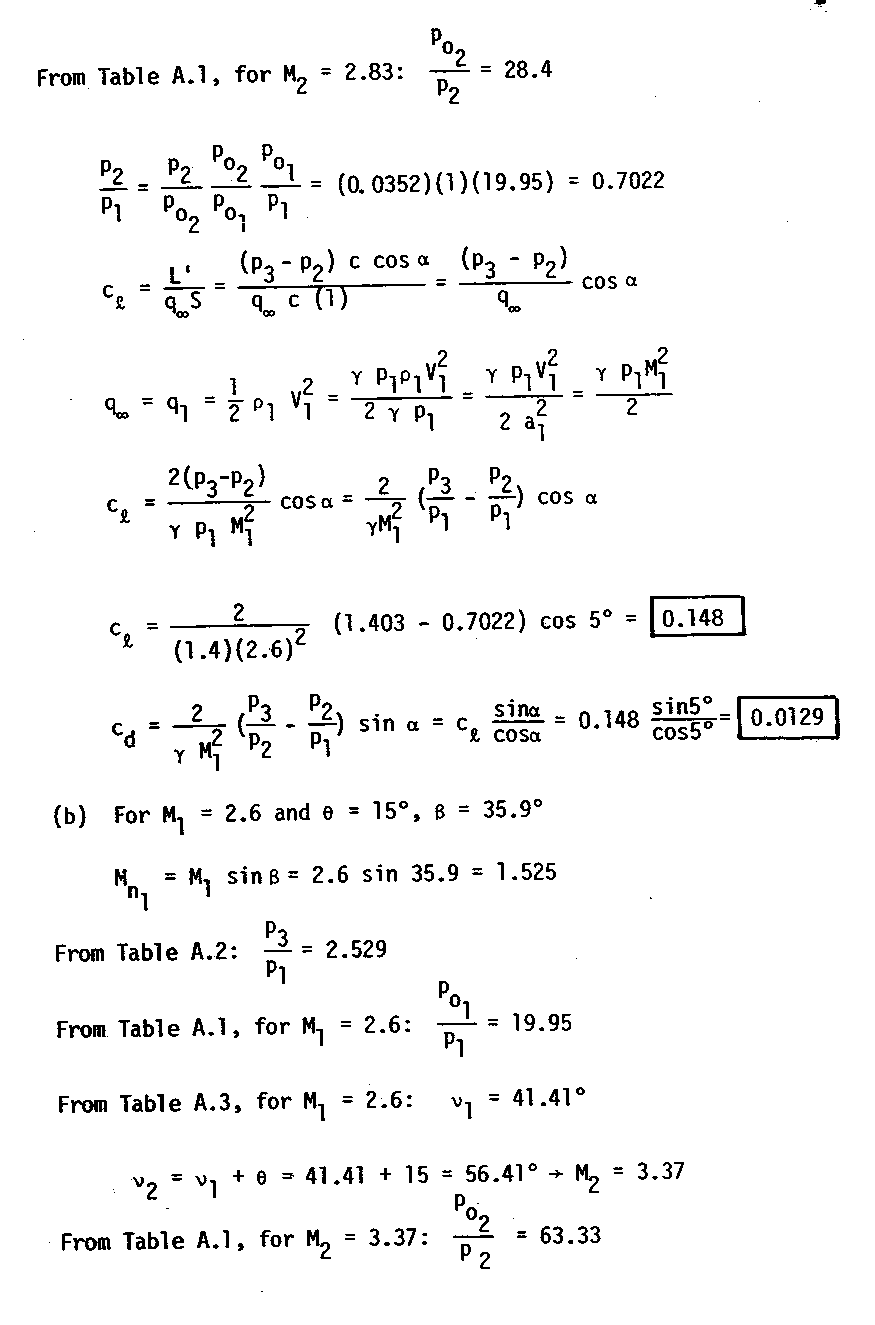
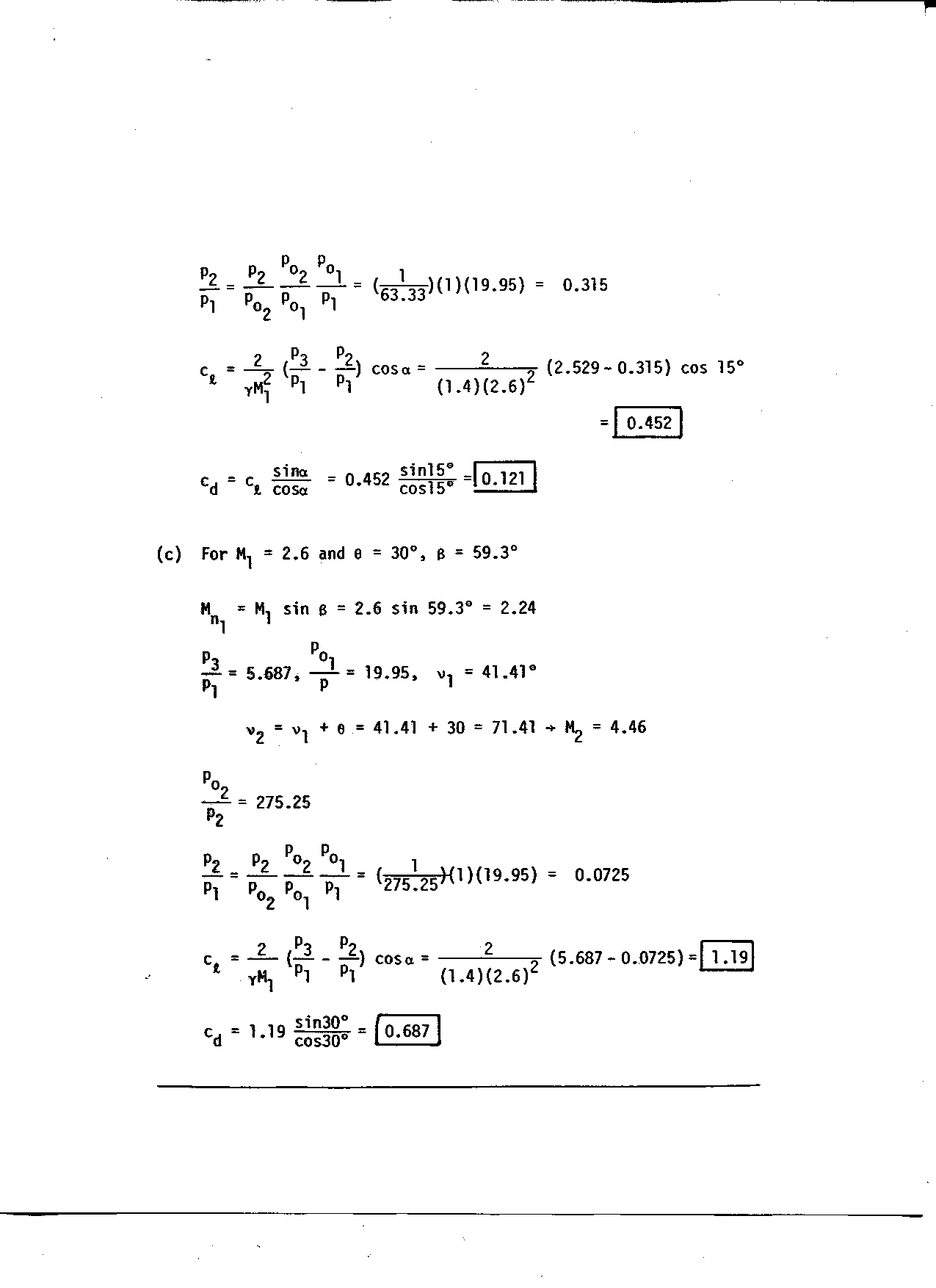
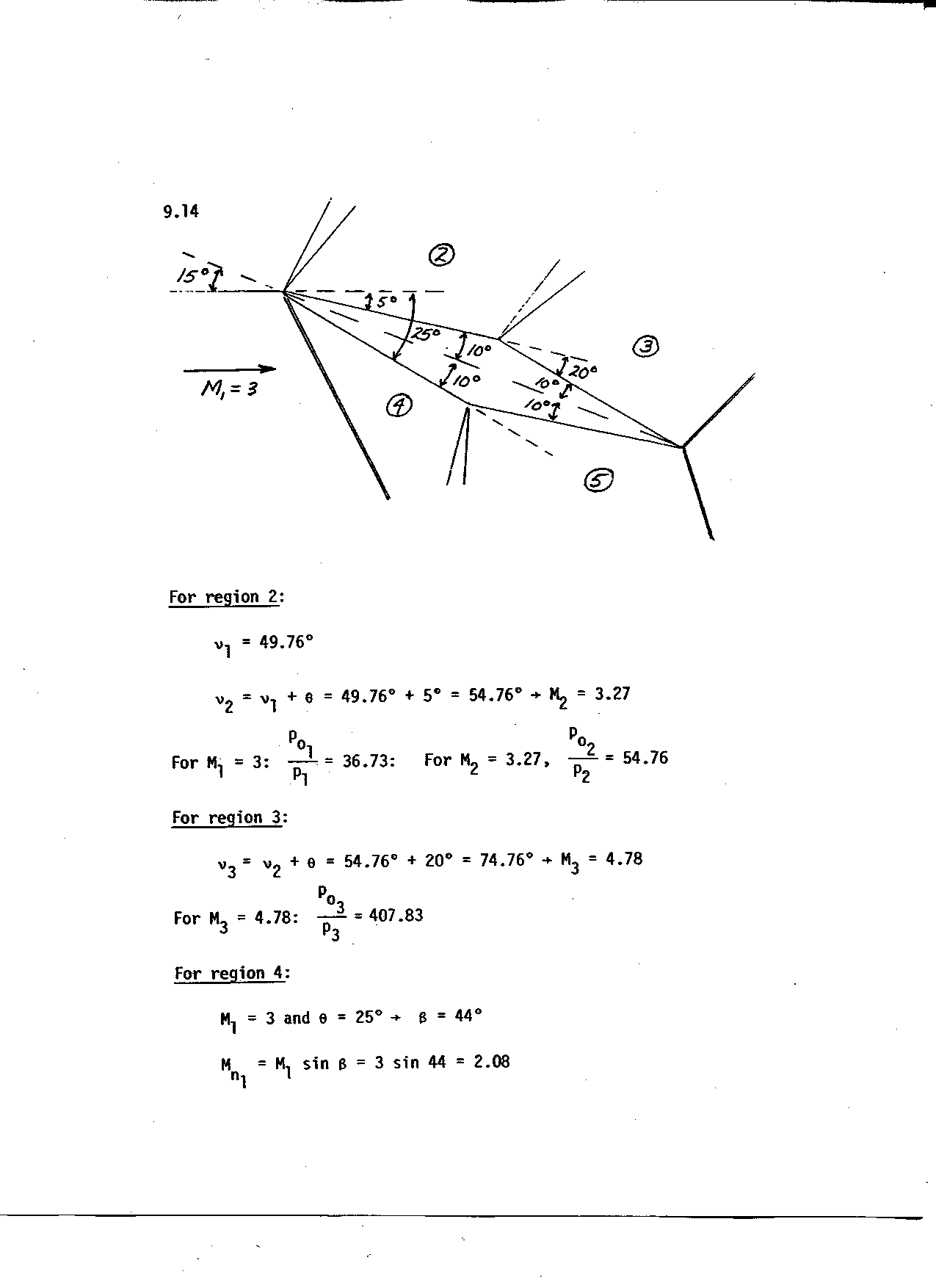
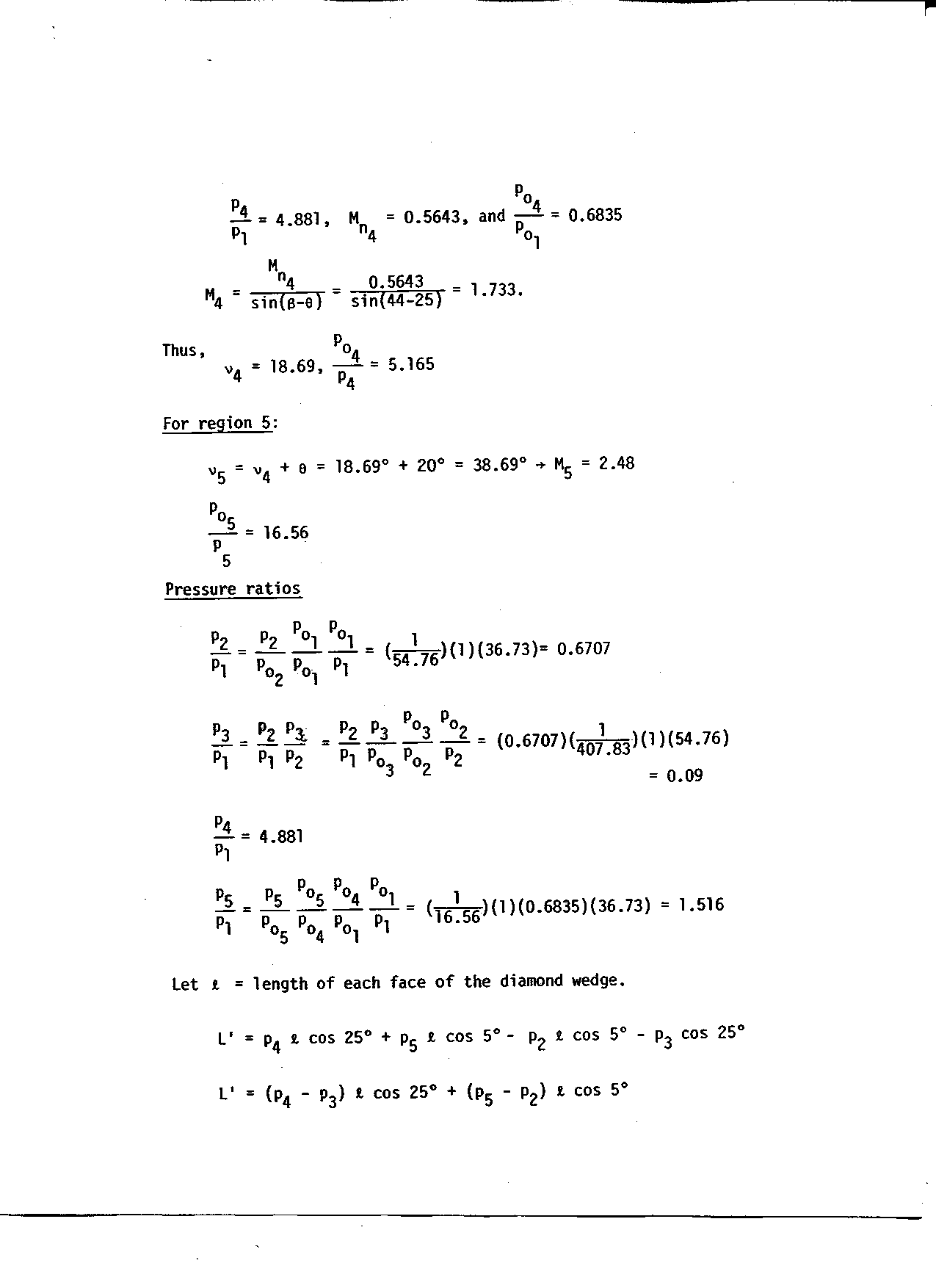
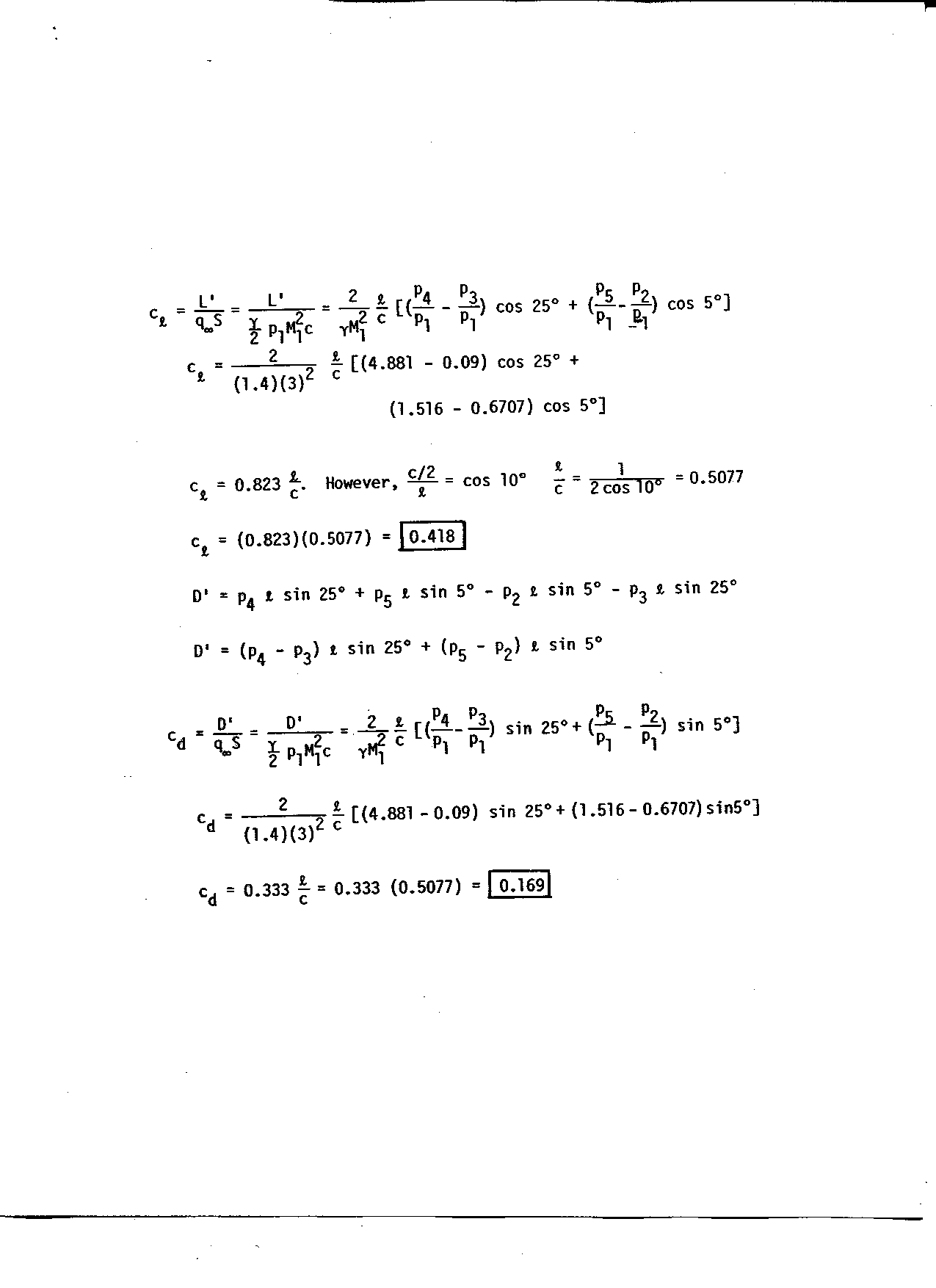
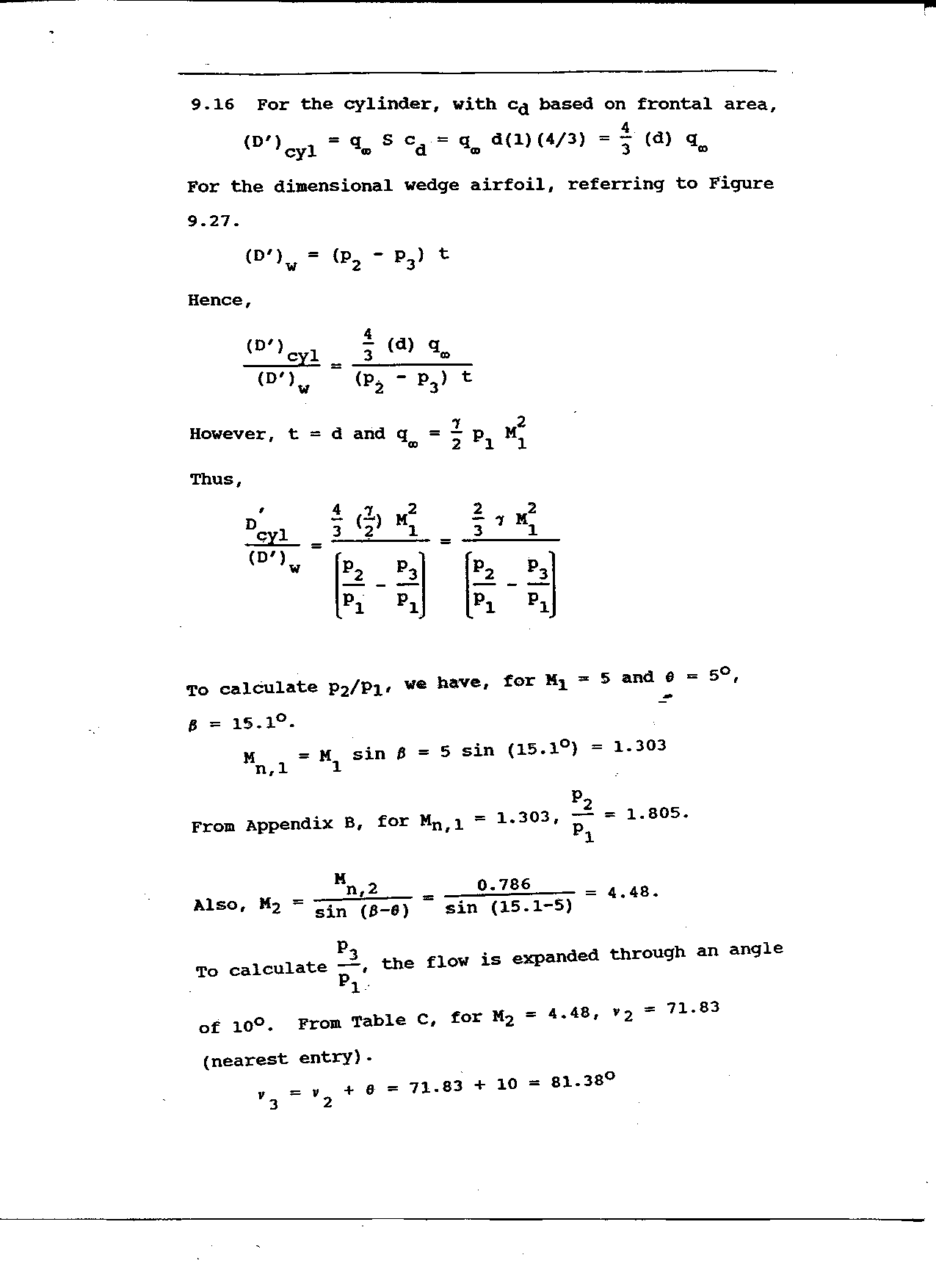
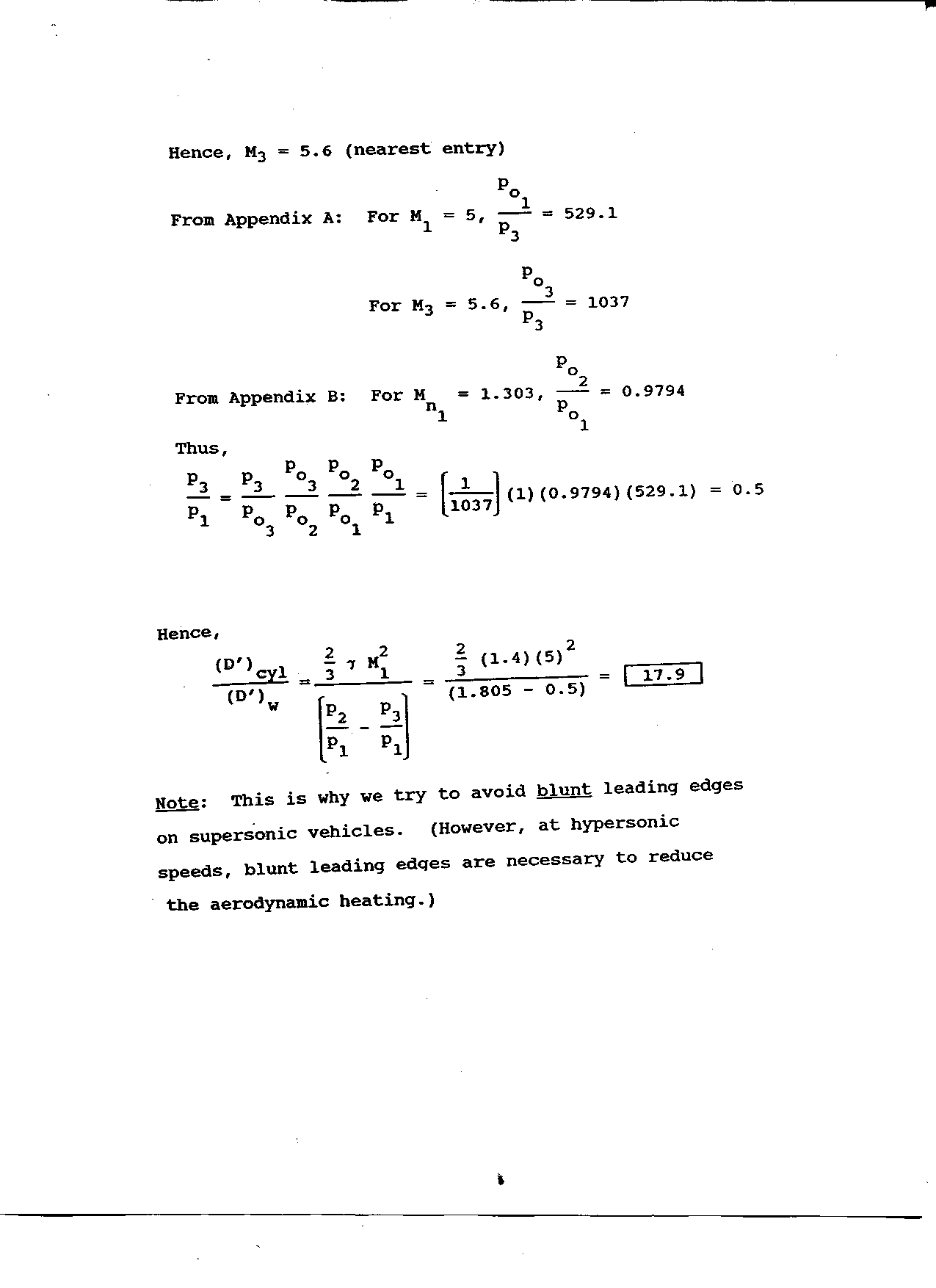
File translated from TEX by TTH, version 2.00.
On 9 Mar 2000, 11:02.











